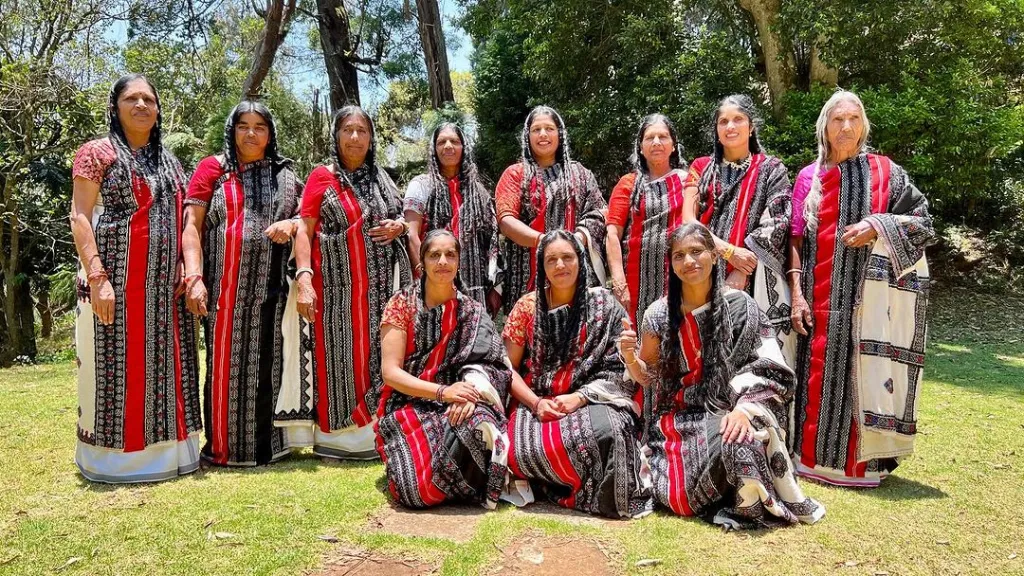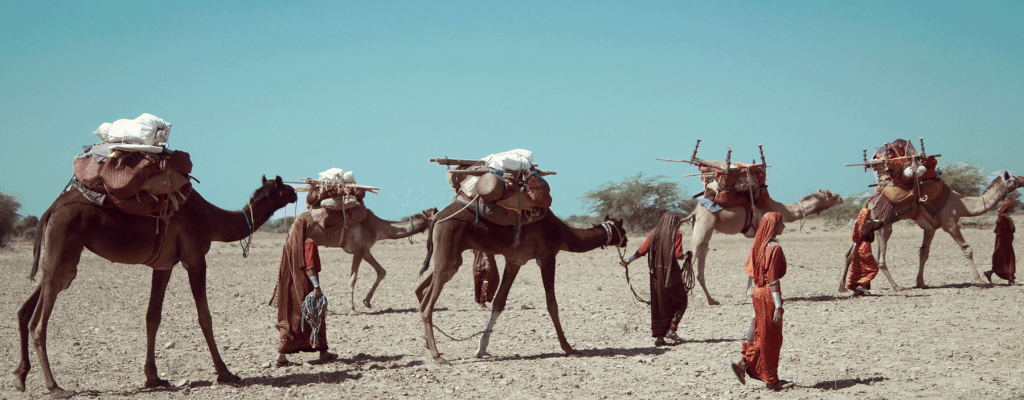Ajrakh is believed to be a symbolic representation of the universe, the blue representing the night sky, the red denoting twilight and the white geometric motifs signifying the stars in the dark sky.
Their fingernails are the color of the midnight sky, and their eyes gleam like diamonds when they talk with passion about the legacy of their family heirloom, the art of printing Ajrakh.
Master craftsperson Dr. Ismail and his son Sufiyan Khatri are two of the very few Ajrakh artists that to date practice Ajrakh printing in it’s traditional form with natural dyes. A legendary name in textile circles, Dr. Khatri now spends his time taking lectures on the technicalities of the art and leaves the rigorous production process to his sons. The printing process is a test of the artists patience with as many as 16 different steps, which may explain the name of the art. Ajrakh is said to take it’s name from the hindi words, “Aaj Rakh” which means “leave it today”, perhaps signifying the patience required to execute this elaborate and extensively detailed process.
While it is impossible to sum the process in a few lines, the steps roughly involve washing the fabric in a mixture of camel dung, soda ash and castor oil, applying fastening agent myrobalan, applying the resist of lime and gum to define the outlines, handprinting in multiple stages with mordants and dyes, dipping in indigo, washing and sun drying it intermittently. The cloth must rest in sunlight between each stage for the colors to mature, and on average it takes three weeks to complete a turban-length of ajrakh cloth.
Sufiyan learned this craft from his father, master craftsperson Dr. Khatri, who in turn learned it from his forefathers. The khatris have been the custodians of this craft for several centuries. With great ease, Sufiyan can name nine generations of his forefathers, right back to Jinda Jiva who first crossed the salt desert from Sind to settle in Kutch in the 17th century. Today, the family members extract dyes from the same plants and minerals, carve their woodblocks with the same designs, and print their cloth with the same combinations as their ancestors did.
 When, in the 17th century, the khatri community settled at the banks of the Saran river in a town called Dhamadka, Ajrakh prints were a staple attire of the Maldhari cattle herders, who became their primary customers. Over time, advances in technology and introduction of chemical dyes threatened the existence of the craft. In the late 1960s almost all Ajrakh artisans had shifted to chemical dyeing.
When, in the 17th century, the khatri community settled at the banks of the Saran river in a town called Dhamadka, Ajrakh prints were a staple attire of the Maldhari cattle herders, who became their primary customers. Over time, advances in technology and introduction of chemical dyes threatened the existence of the craft. In the late 1960s almost all Ajrakh artisans had shifted to chemical dyeing.
Dr. Ismail Khatri’s perseverance and love for the craft kept this family rooted to its original natural glory. Today, customers world over are in awe of this intricate fascinating art form. The family has held workshops on the art world over, won several awards and Dr. Ismail Khatri has also been awarded a honorary Doctorate of Arts degree by De Montfort University of Leicester.
 The Ajrakh technique is extremely reliant on water for the process to be effective. The earthquake of 2001 not only destroyed the homes of the craftsmen in Dhamadka but also made the water of the Saran river unsuitable for Ajrakh printing. This prompted the Ajrakh artisans to restablish life in a new village named Ajrakhpur, where, with the help of the government, the craftsmen have built sustainable facilities like a water harvesting plants.
The Ajrakh technique is extremely reliant on water for the process to be effective. The earthquake of 2001 not only destroyed the homes of the craftsmen in Dhamadka but also made the water of the Saran river unsuitable for Ajrakh printing. This prompted the Ajrakh artisans to restablish life in a new village named Ajrakhpur, where, with the help of the government, the craftsmen have built sustainable facilities like a water harvesting plants.
– by Aarti Jesrani
Shop for a collection of sarees, dupattas and stoles by Ismail and Sufiyan Khatri on http://www.jaypore.com







Leave a comment